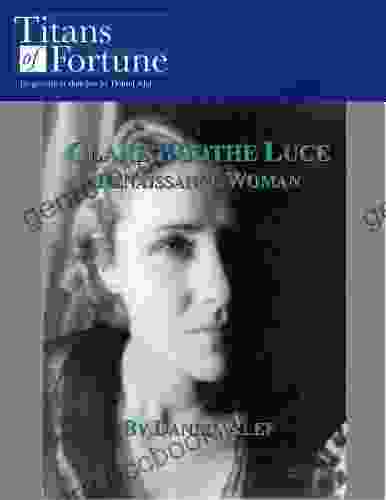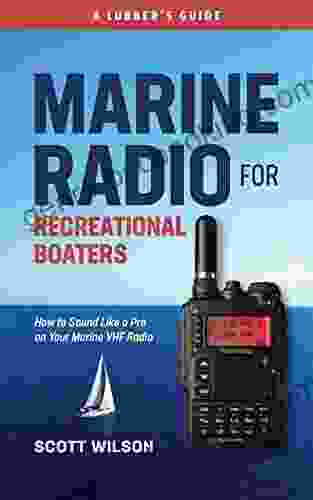How To Sound Like Pro On Your Marine VHF Radio

If you're new to boating, or if you've never used a marine VHF radio before, don't worry! This guide will teach you everything you need to know, from basic operation to advanced techniques.
4.1 out of 5
| Language | : | English |
| File size | : | 5955 KB |
| Text-to-Speech | : | Enabled |
| Screen Reader | : | Supported |
| Enhanced typesetting | : | Enabled |
| Word Wise | : | Enabled |
| Print length | : | 199 pages |
| Lending | : | Enabled |
A marine VHF radio is an essential piece of safety equipment for any boater. It allows you to communicate with other boats, the Coast Guard, and marinas. It can also be used to get weather updates and other important information.
In this guide, we'll cover the following topics:
- Basic VHF radio operation
- Using a VHF radio to communicate with other boats
- Using a VHF radio to communicate with the Coast Guard
- Using a VHF radio to get weather updates
- Advanced VHF radio techniques
Basic VHF Radio Operation
Before you can use a VHF radio, you need to know the basics of how it works.
A VHF radio is a two-way radio that uses very high frequency (VHF) waves to communicate. VHF waves are line-of-sight waves, which means that they can only travel in a straight line. This means that you can only communicate with other boats that are within your line of sight.
VHF radios are typically used for short-range communication, up to about 10 miles. However, the range of a VHF radio can be affected by a number of factors, including the height of your antenna, the terrain, and the weather.
To use a VHF radio, you need to have a license from the Federal Communications Commission (FCC). You can get a license by passing a simple test. You can also find a number of online resources that can help you prepare for the test.
Once you have a license, you can Free Download a VHF radio. There are a variety of VHF radios available, so you can choose one that fits your needs and budget.
To use a VHF radio, you need to turn it on and select the desired channel. You can then press the talk button to speak into the microphone. When you are finished speaking, release the talk button.
Using a VHF Radio to Communicate with Other Boats
One of the most common uses for a VHF radio is to communicate with other boats.
To communicate with another boat, you need to know their call sign. A call sign is a unique identifier that is assigned to each boat by the FCC.
Once you know the call sign of the boat you want to communicate with, you can call them on the VHF radio. To do this, you need to press the talk button and say the following:
"This is [your call sign] calling [other boat's call sign]."
The other boat will then respond by saying:
"This is [other boat's call sign] responding to [your call sign]."
You can then proceed to have a conversation with the other boat.
Using a VHF Radio to Communicate with the Coast Guard
Another important use for a VHF radio is to communicate with the Coast Guard.
To communicate with the Coast Guard, you need to call them on Channel 16. Channel 16 is the international distress frequency. It is used for emergencies and for non-urgent communication with the Coast Guard.
To call the Coast Guard on Channel 16, you need to press the talk button and say the following:
"This is [your call sign] calling the Coast Guard on Channel 16."
The Coast Guard will then respond by saying:
"This is the Coast Guard responding to [your call sign] on Channel 16."
You can then proceed to have a conversation with the Coast Guard.
Using a VHF Radio to Get Weather Updates
You can also use a VHF radio to get weather updates.
To get a weather update, you need to tune your radio to Channel 1. Channel 1 is the National Weather Service (NWS) weather channel. It is used to broadcast weather updates, forecasts, and warnings.
Once you have tuned your radio to Channel 1, you can listen to the NWS weather update. The weather update will typically include the following information:
- Current weather conditions
- Forecast for the next 24 hours
- Warnings for any severe weather
Advanced VHF Radio Techniques
Once you have mastered the basics of VHF radio operation, you can start to learn some more advanced techniques.
One of the most useful advanced techniques is called "selective calling." Selective calling allows you to call a specific boat without having to know their call sign. To use selective calling, you need to have a DSC radio.
DSC radios are equipped with a built-in database of all the DSC-equipped boats in your area. To call a specific boat, you simply need to enter their MMSI number into your DSC radio. The MMSI number is a unique identifier that is assigned to each DSC-equipped boat.
Once you have entered the MMSI number, your DSC radio will automatically send a call to the other boat. The other boat will then respond by saying:
"This is [other boat's call sign] responding to your DSC call."
You can then proceed to have a conversation with the other boat.
Another useful advanced technique is called "digital selective calling." DSC allows you to send and receive text messages on your VHF radio. To use DSC, you need to have a DSC radio that is equipped with a built-in keyboard.
To send a DSC message, you simply need to enter the MMSI number of the boat you want to send the message to, and then type your message. The other boat will then receive your message and respond.
DSC is a very useful tool for communicating with other boats, especially in emergency situations.
A marine VHF radio is an essential piece of safety equipment for any boater. It allows you to communicate with other boats, the Coast Guard, and marinas. It can also be used to get weather updates and other important information.
In this guide, we have covered the basics of VHF radio operation, as well as some more advanced techniques.
We encourage you to learn more about VHF radios and how to use them.
With a little practice, you will be able to use your VHF radio to communicate effectively and safely on the water.
4.1 out of 5
| Language | : | English |
| File size | : | 5955 KB |
| Text-to-Speech | : | Enabled |
| Screen Reader | : | Supported |
| Enhanced typesetting | : | Enabled |
| Word Wise | : | Enabled |
| Print length | : | 199 pages |
| Lending | : | Enabled |
Do you want to contribute by writing guest posts on this blog?
Please contact us and send us a resume of previous articles that you have written.
 Book
Book Novel
Novel Page
Page Chapter
Chapter Text
Text Story
Story Genre
Genre Reader
Reader Library
Library Paperback
Paperback E-book
E-book Magazine
Magazine Newspaper
Newspaper Paragraph
Paragraph Sentence
Sentence Bookmark
Bookmark Shelf
Shelf Glossary
Glossary Bibliography
Bibliography Foreword
Foreword Preface
Preface Synopsis
Synopsis Annotation
Annotation Footnote
Footnote Manuscript
Manuscript Scroll
Scroll Codex
Codex Tome
Tome Bestseller
Bestseller Classics
Classics Library card
Library card Narrative
Narrative Biography
Biography Autobiography
Autobiography Memoir
Memoir Reference
Reference Encyclopedia
Encyclopedia Marilyn Chase
Marilyn Chase Louise Sharland
Louise Sharland Kurt Zimmerman
Kurt Zimmerman Laura Ellen Anderson
Laura Ellen Anderson Leo Zeilig
Leo Zeilig Michelle Mclean
Michelle Mclean Paul Mason
Paul Mason Warren Moore
Warren Moore Lavonne Ellis
Lavonne Ellis L Madison
L Madison Pearley Brown
Pearley Brown Rachel Caine
Rachel Caine Leil Lowndes
Leil Lowndes Susan Yeates
Susan Yeates Tom Wright
Tom Wright Larry Greene
Larry Greene Vijay V Vaitheeswaran
Vijay V Vaitheeswaran Leana Wen
Leana Wen Linda Kaye
Linda Kaye Peter Brown Hoffmeister
Peter Brown Hoffmeister
Light bulbAdvertise smarter! Our strategic ad space ensures maximum exposure. Reserve your spot today!

 Adrian WardDiscover the Enchanting World of Dragon Breath by Kurt Zimmerman: A Literary...
Adrian WardDiscover the Enchanting World of Dragon Breath by Kurt Zimmerman: A Literary...
 Justin BellShogun: The Life of Tokugawa Ieyasu (Tuttle Classics) - An Epic Journey into...
Justin BellShogun: The Life of Tokugawa Ieyasu (Tuttle Classics) - An Epic Journey into... Deion SimmonsFollow ·14.4k
Deion SimmonsFollow ·14.4k Jayden CoxFollow ·16.3k
Jayden CoxFollow ·16.3k Jeffrey CoxFollow ·18.7k
Jeffrey CoxFollow ·18.7k Milan KunderaFollow ·8.8k
Milan KunderaFollow ·8.8k Ryūnosuke AkutagawaFollow ·16.4k
Ryūnosuke AkutagawaFollow ·16.4k Darren NelsonFollow ·7.3k
Darren NelsonFollow ·7.3k Jack LondonFollow ·5.7k
Jack LondonFollow ·5.7k Charles ReedFollow ·16.4k
Charles ReedFollow ·16.4k

 Branden Simmons
Branden SimmonsUnveiling the World of Tequila: A Collector's Guide to...
: Prepare to embark on a tantalizing journey...

 Chuck Mitchell
Chuck MitchellHazel McCallion and the Development of Mississauga: A...
: The Matriarch of Mississauga Hazel...

 Lucas Reed
Lucas ReedUnveiling the Hidden Treasures of Tequila, Mezcal, and...
Prepare to be captivated...

 Isaias Blair
Isaias BlairBusinesses With Stories: The Power of Storytelling in...
In today's competitive business environment,...

 Ethan Gray
Ethan GrayUnveiling the World of Tequila, Mezcal, and Sotol: The...
Embark on a...

 Barry Bryant
Barry BryantClare Boothe Luce: Renaissance Woman
In the annals of history, few...
4.1 out of 5
| Language | : | English |
| File size | : | 5955 KB |
| Text-to-Speech | : | Enabled |
| Screen Reader | : | Supported |
| Enhanced typesetting | : | Enabled |
| Word Wise | : | Enabled |
| Print length | : | 199 pages |
| Lending | : | Enabled |








